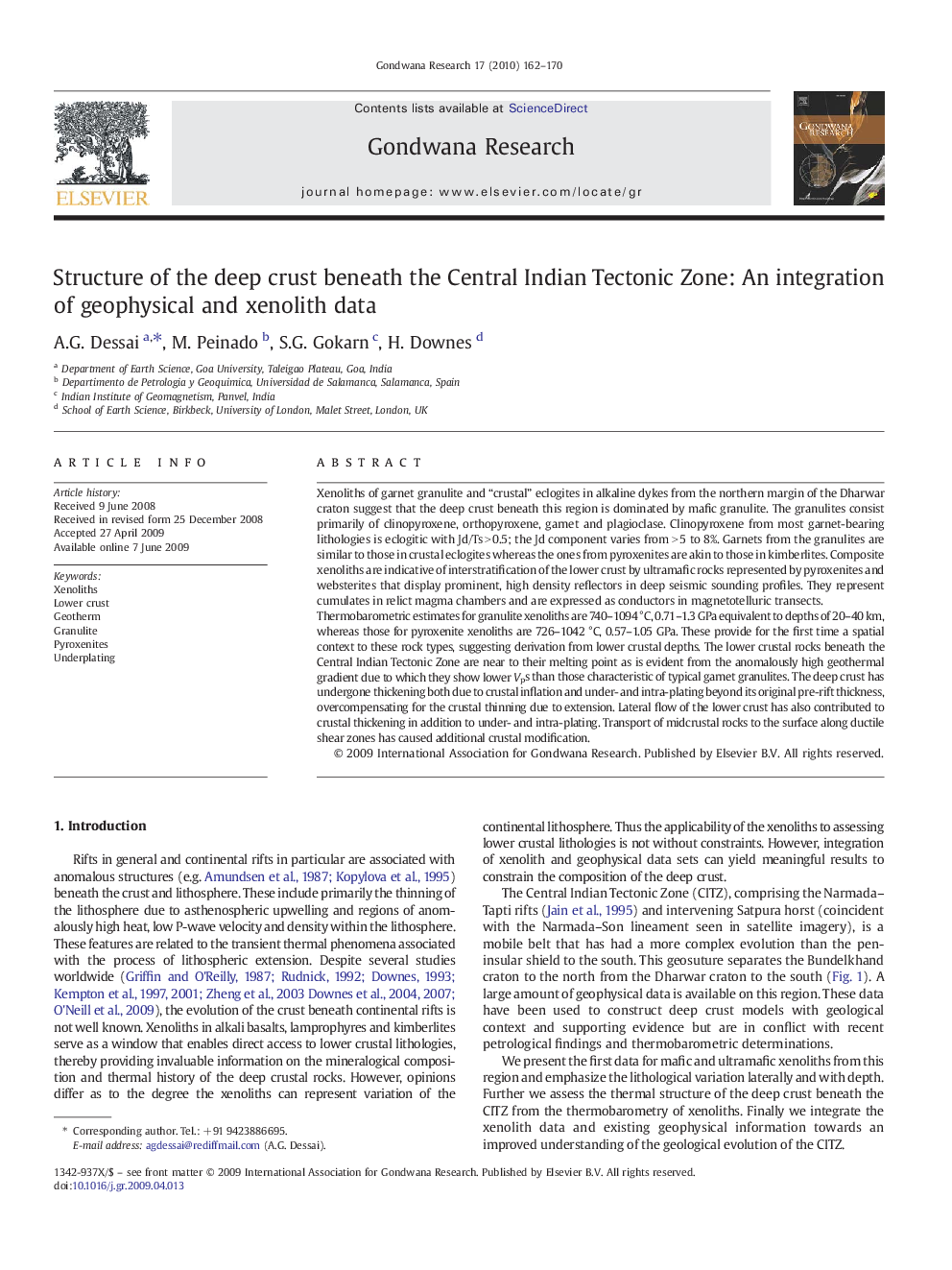| Article ID | Journal | Published Year | Pages | File Type |
|---|---|---|---|---|
| 4727270 | Gondwana Research | 2010 | 9 Pages |
Abstract
Thermobarometric estimates for granulite xenoliths are 740-1094 °C, 0.71-1.3 GPa equivalent to depths of 20-40 km, whereas those for pyroxenite xenoliths are 726-1042 °C, 0.57-1.05 GPa. These provide for the first time a spatial context to these rock types, suggesting derivation from lower crustal depths. The lower crustal rocks beneath the Central Indian Tectonic Zone are near to their melting point as is evident from the anomalously high geothermal gradient due to which they show lower Vps than those characteristic of typical garnet granulites. The deep crust has undergone thickening both due to crustal inflation and under- and intra-plating beyond its original pre-rift thickness, overcompensating for the crustal thinning due to extension. Lateral flow of the lower crust has also contributed to crustal thickening in addition to under- and intra-plating. Transport of midcrustal rocks to the surface along ductile shear zones has caused additional crustal modification.
Related Topics
Physical Sciences and Engineering
Earth and Planetary Sciences
Geology
Authors
A.G. Dessai, M. Peinado, S.G. Gokarn, H. Downes,
